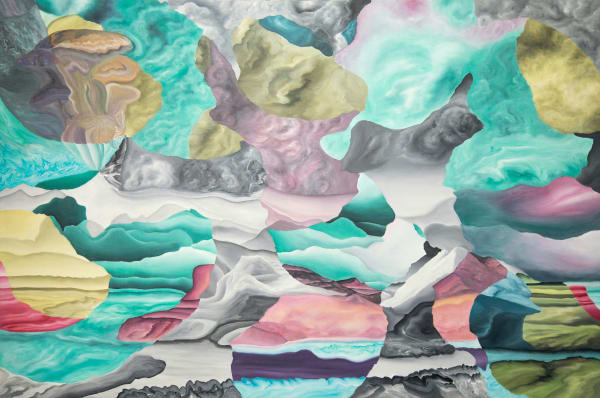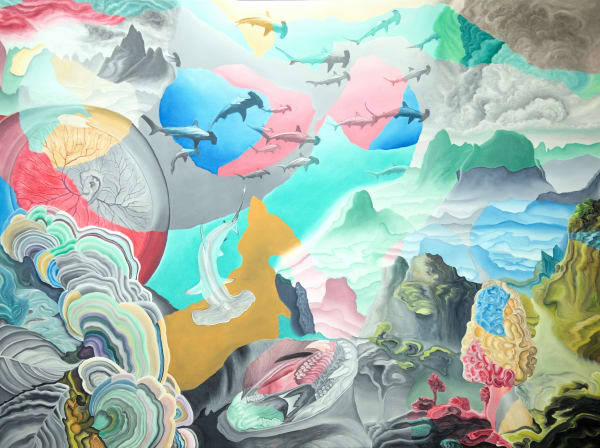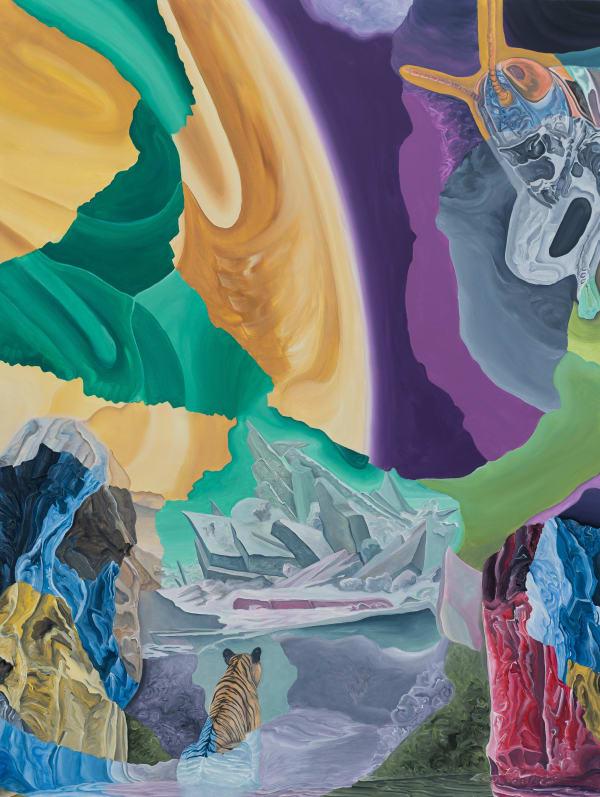-
-

-
Group Exhibitions include Darwin College, Cambridge University, Cambridge, UK (2024); 1-54, Kó Gallery, New York, USA (2024); Untitled, Kó Gallery, Miami, USA (2023); Art X, KóGallery, Lagos, Nigeria ( 2023); 1-54, The Dada Gallery, London, UK (2023); Where the Wild Roses Grow, Kristin Hjellegjerde Gallery, Schloss Görne, Germany (2023); Reverie, The Dada Gallery, Maritama Sule, Ikoye, Nigeria (2023); Art Dubai with Kó Gallery, Dubai, UAE (2023); Tomorrow is Tomorrow is Tomorrow, Kristin Hjellegjerde Gallery, London (2023); We see We Hope We Dream, TAOH initiative at the Mike Adenuga Centre, Ikoyi (2022).
Highlights and Collections
Asiedu's work is held in international private and public collections including the Arcadia Art Foundation. In 2023, Asiedu was Art X Selected Panelist for the Art X Development Forum which aimed at bridging the gap between emerging art practitioners and the art industry. He was also featured artist for Art X in the third edition of its landmark project, Art Across Borders, celebrating leading artists of African descent who contribute to enriching cultural discourse and ecosystems on the continent, as the selected representative for West Africa.
-

-
I’ve Seen Fire similarly uses animals – in this case a stallion and a pangolin – to add an emotional resonance to the composition. They are the ones who have seen and felt the effects of global warming most acutely and yet, they are also symbols of power and resilience. The horse is charging not away from danger but through the flames towards the viewer, while the pangolin, an animal who is at risk from extinction due to trafficking by humans, is not only the most concrete part of the image, the outline of its scales illuminated by a giant sun, but also blown up to a larger-than-life scale. Within this apocalyptic landscape, defined by acid-like tones, flames, charred and melting earth, their presence serves to highlight both nature’s suffering and adaptability in the face of human destruction.This idea of mutability is also conveyed through Asiedu’s process in which he combines fragmented images to assemble new topographies but also through the recurring presence of mushrooms, which feature in almost all of the paintings in the series. ‘Fungal mycelia are highly intelligent: they exhibit decision-making and alter their developmental patterns in response to interactions with other organisms,’ he explains. ‘In my work, as in nature, they are small but mighty, integral to the foundations of our existing, and my painted, ecosystems.’ In other words, they offer a symbol of hope, of a world being remade – albeit one which may not include us. This unnerving truth lies at the crux of Asideu’s work and creates a sense of precarity throughout, but still, amid all the chaos and broken imagery, his blazing colours and shapeshifting forms hint at the potential for a radical kind of renewal and a world order in which nature, not us, rules supreme.
-
Kwadwo A Asiedu: In its Wistful Shatter
Past viewing_room











